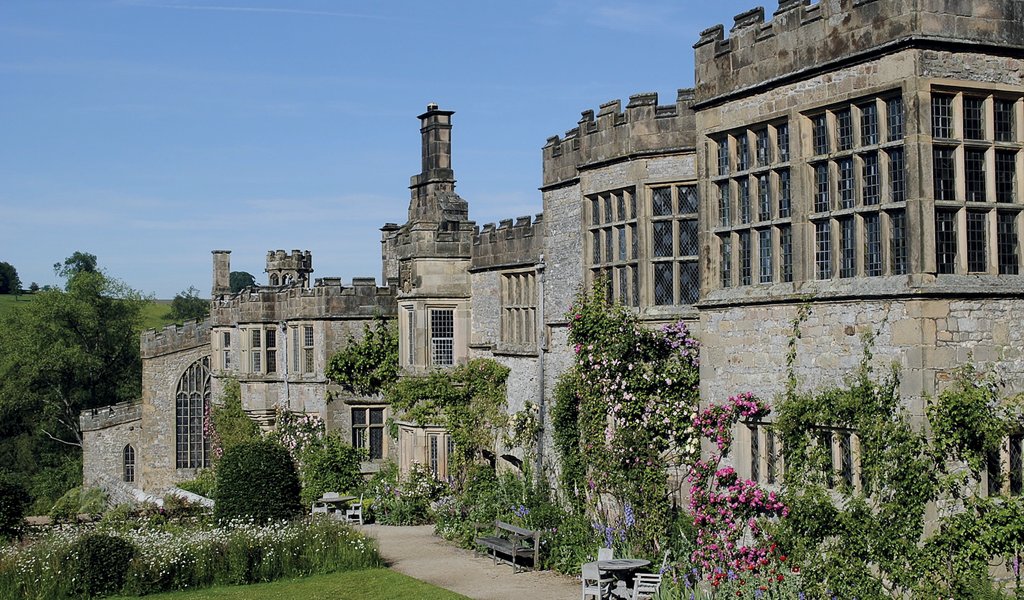Derbyshire has more than its share of historic houses – and three of them are in an association that has just celebrated its 50th anniversary. Barrie Farnsworth reports.
THREE stately homes in Derbyshire – Renishaw, Haddon and Eyam Halls – are members of an association of around 1,400 stately home owners, called when it was set up just over 50 years ago as the Historic Houses Association.
People think of the Seventies as a period dominated, politically, by trades unions. Few recall that, late in 1973, the unlikeliest group imaginable – many of them titled aristocrats living in some of Britain’s grandest country seats – formed an industry body of their own.
Their aim was to share technical expertise and to campaign for a new settlement regarding the beloved but costly ‘white elephants’ of the UK’s mansions and manor houses, castles, and gardens.
For the previous forty years or so, an average of one historically important ‘great house’ every week had been lost to fire, neglect, or, sometimes, deliberate demolition by owners who could see no future use for these huge expressions of past glories and had no means to pay for their upkeep.
Some foresighted experts and owners, however, believed that a different future was possible. The Gowers Report on Houses of National Importance, published by a Labour government in 1950, concluded that the only way hundreds of endangered stately homes would ever see the next century was to use tax breaks to incentivise owners to continue living in them – and encouraging those owners to make them pay by opening them as tourist attractions.
Lord Montagu of Beaulieu was foremost among those making a go of that approach in practice. Almost a hundred houses were open to the public by 1952, so the idea wasn’t unheard of, but his creation of a motor museum to draw in larger crowds was novel. “I would rather keep my home and surrender my privacy than the other way around,” he said at the time.
In March 1952, invitations went out to stately home owners to establish some of industry association. However, reported The Sunday Chronicle, ‘the Earl of Leicester declined with thanks; the 11th Duke of Devonshire wanted no part of it; Lord Salisbury thought it “not quite the thing”; and the Earl of Onslow simply “pooh-poohed” the idea.’
But owners of country houses could not ignore the seriousness of the threat, which worsened later in the Fifties and Sixties. Death duties often forced the sale and break-up of landed estates, and many great houses were simply demolished to avoid the ongoing cost of maintenance. Soon, a ‘working party of country house owners’ had been formally convened by the British Travel Association – later the British Tourist Authority – which seized on the importance of historic houses in attracting overseas visitors.
Estate duty at the time was 80 per cent on amounts in excess of £750,000, with no heritage exemptions.
In 1973, that working party declared independence as the Historic Houses Association. The timing was fortuitous. In 1974, the government issued proposals for a wealth tax which would have had catastrophic effects for historic house owners. The association campaigned vigorously for a recognition of the special status of heritage assets, which in 1974 had attracted almost 50-million visitors and were an increasingly important pillar of Britain’s tourist industry.
The clinching argument was that the public were on the side of the owners. A petition against the proposed tax attracted 1,116,253 signatures and was presented to Parliament in December 1975. The government changed course, and shortly after the regime of ‘conditional exemption’ – offering some inheritance tax breaks in exchange for public access to places of national historical importance – became the foundation of the subsequent recovery of historic houses and gardens.
In the half century since its early triumph, the Association – which rebranded as Historic Houses in 2018 – has helped its 1,400 member’s country houses navigate the challenges of regulatory change, new technology and climate change.
The typical ‘country house business’ has changed beyond recognition since 1973, with new sources of income, such as weddings and filming, becoming essential to meeting – in part – the estimated £1.4-billion backlog of repairs and maintenance outstanding across the association’s membership.
These ‘historic houses’ now generate an estimated £1.3 billion of tourist income from 21-million annual visits.






